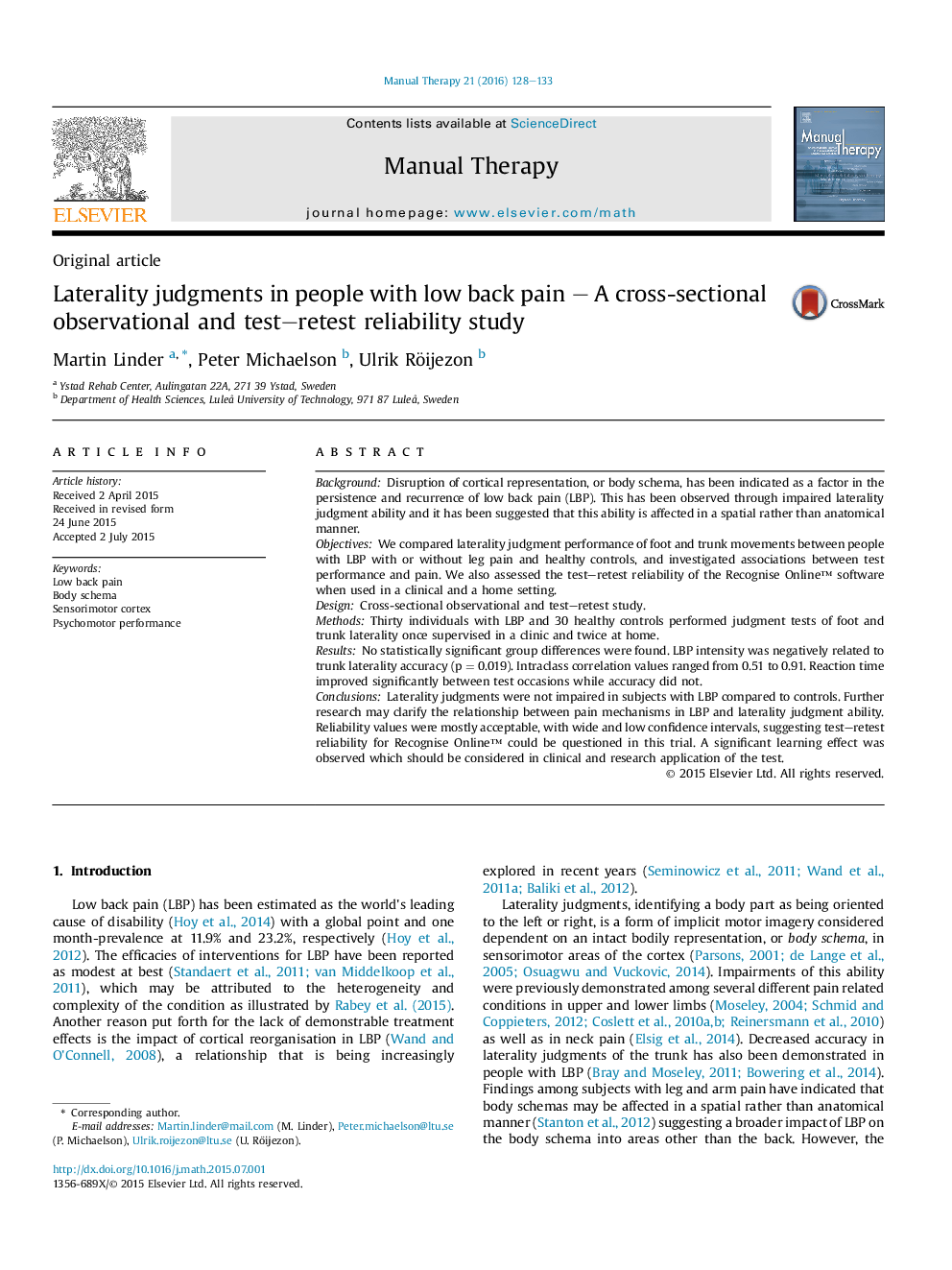| Article ID | Journal | Published Year | Pages | File Type |
|---|---|---|---|---|
| 5864598 | Manual Therapy | 2016 | 6 Pages |
â¢Laterality judgment performance was compared between people with LBP and controls.â¢Tests were administered in a clinic and then twice unsupervised in a home setting.â¢No impairment of laterality judgment ability was found in LBP on group level.â¢Measures of reliability indicated moderate ICC and wide CI especially for trunk ACC.â¢Significant learning effects were evident in tests of laterality judgment ability.
BackgroundDisruption of cortical representation, or body schema, has been indicated as a factor in the persistence and recurrence of low back pain (LBP). This has been observed through impaired laterality judgment ability and it has been suggested that this ability is affected in a spatial rather than anatomical manner.ObjectivesWe compared laterality judgment performance of foot and trunk movements between people with LBP with or without leg pain and healthy controls, and investigated associations between test performance and pain. We also assessed the test-retest reliability of the Recognise Online⢠software when used in a clinical and a home setting.DesignCross-sectional observational and test-retest study.MethodsThirty individuals with LBP and 30 healthy controls performed judgment tests of foot and trunk laterality once supervised in a clinic and twice at home.ResultsNo statistically significant group differences were found. LBP intensity was negatively related to trunk laterality accuracy (p = 0.019). Intraclass correlation values ranged from 0.51 to 0.91. Reaction time improved significantly between test occasions while accuracy did not.ConclusionsLaterality judgments were not impaired in subjects with LBP compared to controls. Further research may clarify the relationship between pain mechanisms in LBP and laterality judgment ability. Reliability values were mostly acceptable, with wide and low confidence intervals, suggesting test-retest reliability for Recognise Online⢠could be questioned in this trial. A significant learning effect was observed which should be considered in clinical and research application of the test.
